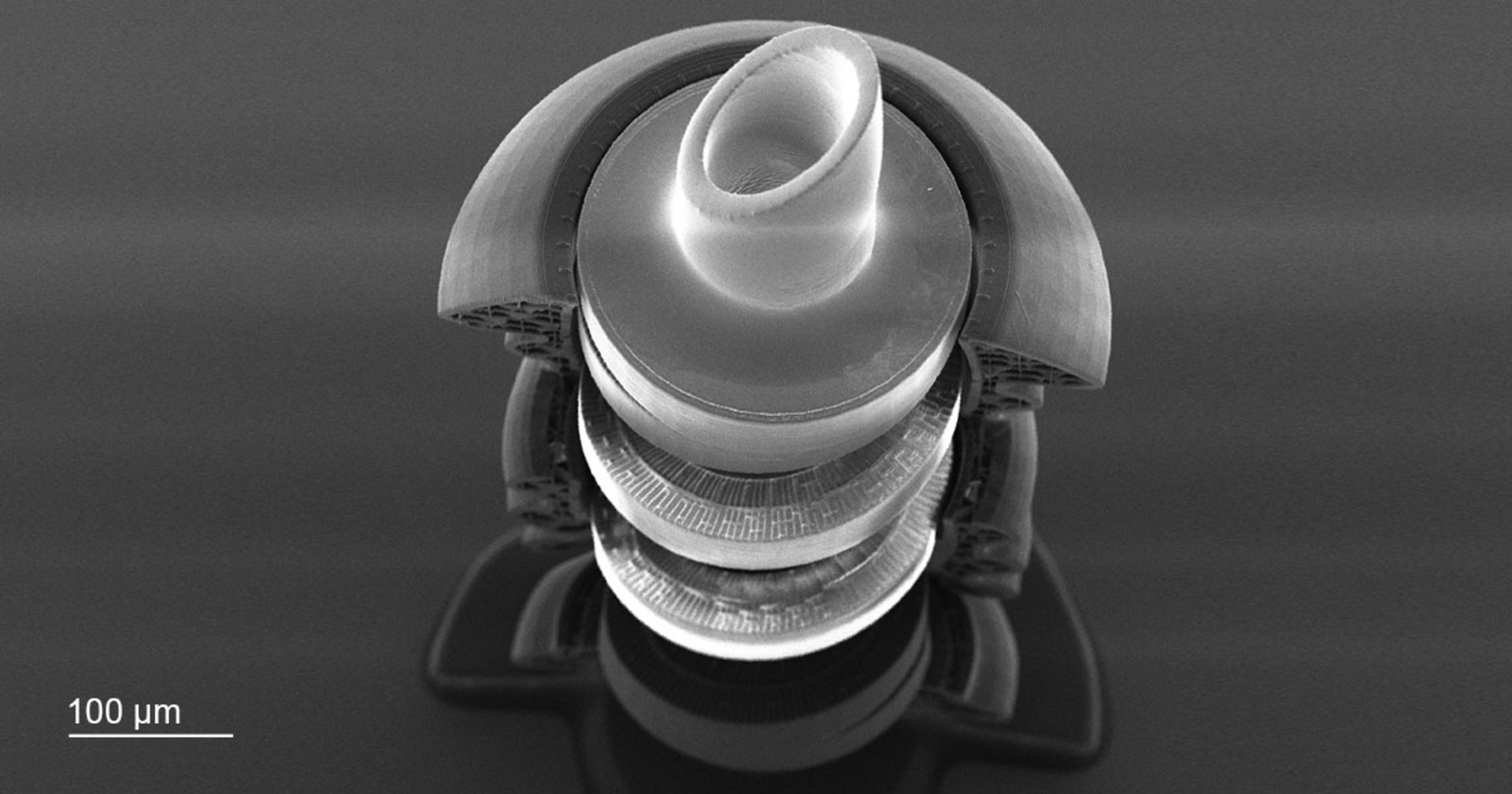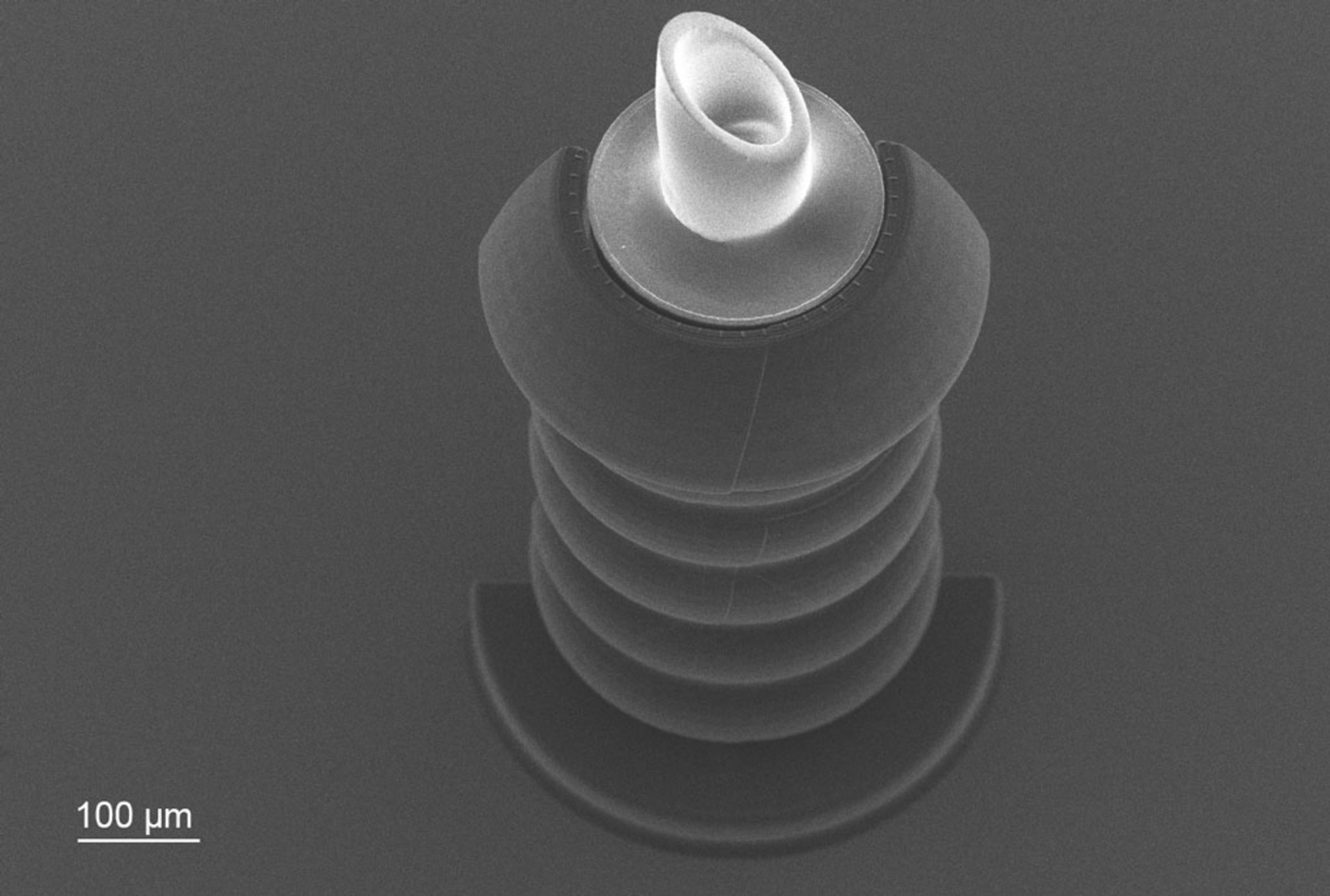Glaucoma is the world’s second cause of irreversible blindness after cataracts. The World Health Organization estimates that 4.5 million people worldwide are blind due to glaucoma. In some cases, glaucoma is a condition caused by increased pressure in the eye, damaging the optic nerve. This nerve transfers information from the retina, the light sensitive layer in the eye, to the brain. Over a long period of time, the damage of the optic nerve would gradually cause the loss of vision.
To tackle this condition, researchers from the Fundación Markoptic developed a microscopic device that could reduce the intraocular pressure and prevent the condition to develop into a more serious disability. For the fabrication of the device, they started a collaboration with the Laboratorio Nacional de Soluciones Biomiméticas para Diagnóstico y Terapia (LaNSBioDyT) at the UNAM that have the expertise and facilities for microfabrication.
The microvalve was conceived by the president of the Fundación Markoptic, Manuel Gallardo Inzunza. He suffered from glaucoma at birth and lost his sight 13 years ago, despite five corneal transplants. The design that he invented is inspired by an internal combustion engine of an airplane. The modified and miniaturized replica was developed to expel the aqueous humor from the eye, freeing the eye pressure. At the same time the microvalve uses a spring to control constant flow and intraocular pressure in a similar manner as the intake valve of a gasoline engine.




